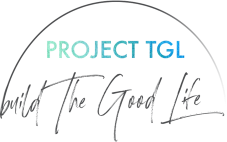As a small business systems specialist, I get to see the inside workings of lots of different businesses. Which means that I also get to see the things businesses are doing really well and the things they’re doing … not so well.
And one of the things a lot of businesses make mistakes with is onboarding new customers. So let’s dig into why this happens, shall we?
Mistake 1: Under-communicating
Have you heard of the Curse of Knowledge? It’s a psychological phenomenon where the more you know about a particular topic the harder it is for you to relate to the mindset of someone who doesn’t know about the topic.
And when it comes to your own services? Well, you know a lot about that topic. You know mountains more about it than your clients do. Which means that you can be a leeeetle bit prone to under-communicating with your potential clients.
What should you do instead? At every step of the sales and onboarding process, you should continually let them know exactly what to expect next.
Don’t just say “Let’s jump on an obligation-free call,” say “Let’s jump on a call to discuss what you’d like to get out of this service, so that I can quote you accurately.”
Mistake 2: Covering lots of benefits, but no features
We’ve all heard the advice of “sell the benefits, not the features”, or “sell the sizzle, not the steak”. And this is generally good advice. But at the actual point of sale? (Whether that’s a sales page, or a proposal, or a quote.) You have to list the features.
Tell the client exactly what they will get in exchange for handing over their hard-earned cash. Don’t just say “We’ll transform your money mindset so you can unleash your earning potential,” make sure you also say “We’ll have 3 coaching sessions of 60 minutes each.” (Or, you know, whatever your service actually is.)
Your potential customer will never proceed through checkout, or click ‘yes’ on your proposal, if they don’t actually know what they’re getting.
Mistake 3: Not creating systems, templates, and SOPs
If you’re going to do something 10 times or more (and I hope you’re going to onboard clients more than 10 times) you need systems, templates, and SOPs. (What are SOPs? Standard Operating Procedures — in other words, writing down how you do things so you don’t have to reinvent the wheel every time.)
I get it. Doing the work of creating templates and processes can be daunting. But I promise that if you don’t have them, you’re already doing much more work than you need to. Work like:
- Opening up emails to previous clients so you can copy, paste, and edit what you said and send it to new clients
- Searching through your inbox because you suddenly remembered an email you sent a prospective client weeks ago, and you’re not sure if they ever responded
- Spending precious time personalising client forms and emails which really could be automated
You can make the process of creating systems, templates, and SOPs easier on yourself by creating them while you work with actual clients. For example, next time you find yourself copying text from a previous client email, save that text as a template in your email system. Or, next time you need to ask a client the same questions you ask every client, turn it into a form instead of asking the questions via email.
Want to review & update your Customer Journey in 1 day?
If you think your Customer Journey could do with a little updating, I’m here to make it easy for you!
My Customer Journey in a Day course is designed to help you create a sparkling new customer journey strategy (from enquiry to offboarding), all in a single day. You’ll walk away with a clear customer journey plan which you can implement while you onboard your next 4 customers.
Learn more about the course and sign up here:



